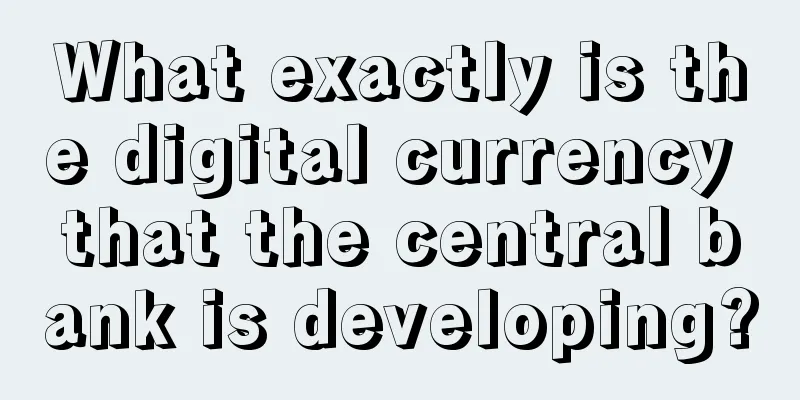Hong Kong Bitcoin Scaling Workshop Day 2: Developers’ Different Views on Hard Forks

|
The second day of the Scaling Bitcoin conference in Hong Kong has concluded, with a morning filled with enthusiasm for long-standing ideas such as Lightning Network payment channels, which were clearly demonstrated by developers, and the surprising idea of segregated witness, a proposal by Blockstream co-founder Pieter Wuille to scale the Bitcoin blockchain without a hard fork. Changes to the Bitcoin protocol are not backward compatible, and hard forks have become a controversial issue in the community, with some people believing that they pose potential risks. In fact, a hard fork requires all members of the Bitcoin ecosystem to upgrade their software in a consistent manner. This implies a risk of creating two different versions of the Bitcoin blockchain. While Wuille’s proposal would avoid a hard fork, which is exciting enough, core developer Jeff Garzik believes the solution the Bitcoin community needs is precisely what a hard fork is, in part to eliminate the fear that comes with the issue. During the conversation, Garzik said:
Garzik’s political demands were balanced by a fair dose of scholarship, as he said a one-time block size increase was not enough and the community needed to continue pushing for scaling solutions. However, he believes that if people do not change the network, this may cause Bitcoin companies to continue to pursue paths that may split the blockchain. He also pointed out that any technical consensus above 2MB is risky.
Segregated witness proposalThe most popular talk of the day came from Blockstream co-founder Pieter Wuille, who proposed that the block size could be increased by simply soft-forking the network, which would change the way transaction signatures are handled. Wuille started by breaking down Bitcoin transactions, explaining that Bitcoin transactions are the sum of
In general, the proposal is to achieve block size expansion by changing the way the network handles signature data. If it is an existing transaction, it can increase the maximum block size of Bitcoin to “We could increase the blocksize via a soft fork, that’s what I would suggest,” Wuille concluded. This view was met with warm applause from the audience, and Wuille at the podium sometimes burst into uncontrollable passion for speaking. Closed-door meeting between miners and developersThe closed-door meeting followed the Chatham House Rules (no names mentioned), and during the roundtable discussion, Bitcoin developers and members of the Chinese Bitcoin mining community further discussed the issues raised during the first day of the meeting. The two-hour meeting, which one participant described as a “12-hour United Nations meeting,” was often a little unnatural due to the language barrier, but both sides were able to understand each other’s perspectives on the Bitcoin network. For example, Bitcoin developers are trying to determine the bottom line of fundamental metrics that affect miners and evaluate solutions that affect their profitability, or in other words, the bottom line of miners' willingness to protect the Bitcoin network and continue processing Bitcoin transactions. Metrics include the orphan Much of the conversation centered around Peter Wuille’s proposal for Segregated Witness, a way to compress data on the bitcoin blockchain. The talks were tense as developers wanted to scale the network to allow global use, but miners, who tended to prefer a pragmatic approach, expressed a willingness to accept practical imperfections in the system. “Don’t worry about it,” one miner representative said of the possibility of bad guys attacking the network with 51% hashrate. “Why would I want to spend money to commit suicide?” An interesting scene at the meeting was that neither miners nor developers wanted to be seen as the main decision makers of the Bitcoin network. “We as developers don’t want to be seen as controlling Bitcoin,” said one developer, noting that the technology is highly regulated in Western countries. The discussion group has basically decided on the indicators, including resolving potential factors between Chinese nodes and global nodes, and how to balance the fair competition environment between large and small miners. It is reported that the core developers will also have relevant discussions with the Chinese community through WeChat groups. Lightning Network ProgressPerhaps the biggest winner of the day among all the alternative scaling solutions that don’t impact block size is the Lightning Network. Tadge Dryja, a developer of the Lightning Network, has made a plausible case for moving small bitcoin transactions off the main blockchain while maintaining bitcoin’s decentralized design. Dryja’s presentation focused on how the Lightning Network could be implemented on Bitcoin. He proposed three possible deployment scenarios and pointed out the available features under each scenario.
Various BIPs (Bitcoin Improvement Proposals)Perhaps the most anticipated talk of the day came from Bitcoin Core developer Jeff Garzik, who gave a fair overview of the various block size increase proposals that have been put forward. Garzik explained all the proposals one by one in an academic tone. If the block size is too small, he argued, users could be forced off the blockchain and into the “walled gardens” of bitcoin service providers, while if the block size is too large, the network’s nodes would become less decentralized.
Garzik also voiced opposition to the proposal to maintain the current block size, saying it risks causing transaction overload and forcing users to pay additional fees.
In addition, Garzik also analyzed the pros and cons of various proposals, including BIP 100, BIP 101, BIP 103, BIP 105, BIP 106 and BIP 248, and the best method he suggested was During the question-and-answer session, Garzik also emphasized that block expansion is not a one-time solution and the community needs to continue to pay attention to Bitcoin expansion. He concluded:
Original article: http://www.coindesk.com/hard-fork-developers-scaling-bitcoin/ |
<<: Conversation on blockchain cognition
>>: Factcom envisions a new generation of voting system based on blockchain
Recommend
What is the appearance of a person with a sunken forehead?
Some people have sunken foreheads, while others h...
What kind of man can marry a woman who brings good fortune to her husband?
What kind of man can marry a woman who brings goo...
XRP is coming, CoinCola doubles the benefits and gives back
On December 7, Hong Kong digital asset trading pl...
Is it bad to have no career line in palmistry?
The career line is also known as the "jade p...
What does it mean to have pearls on both sides of the mouth? What are the typical characteristics of a blessed life?
In physiognomy, a face with pearls on both sides ...
What are the palm lines for being loyal in love?
Love is very important to everyone. Everyone hope...
How will a person with a mole that kills his child do in the workplace?
If you want to be successful in the workplace, yo...
Coinbase Releases First Bitcoin Debit Card
The biggest obstacle facing Bitcoin is that it is...
Where is the best place to have a mole on the ear to ensure a life of wealth and comfort?
Although not everyone has a mole on the ear, havi...
Different moles can predict good and bad luck in life
Different moles can predict good and bad luck in ...
Judging a person's personality from his eating habits
(1) Like to chat or talk with others while eating...
Jaxx 1.0 blockchain wallet released on all platforms
Rage Review : Jaxx is a new wallet developed by t...
The complexion of your face can tell whether you are going to be lucky or not
We often hear people say "If someone's f...
Which women are prone to bad luck in love according to their face
Which women are prone to bad luck in love accordi...
Is it good to have Sichuan-shaped wrinkles on the forehead?
The "川" pattern on the face represents ...









